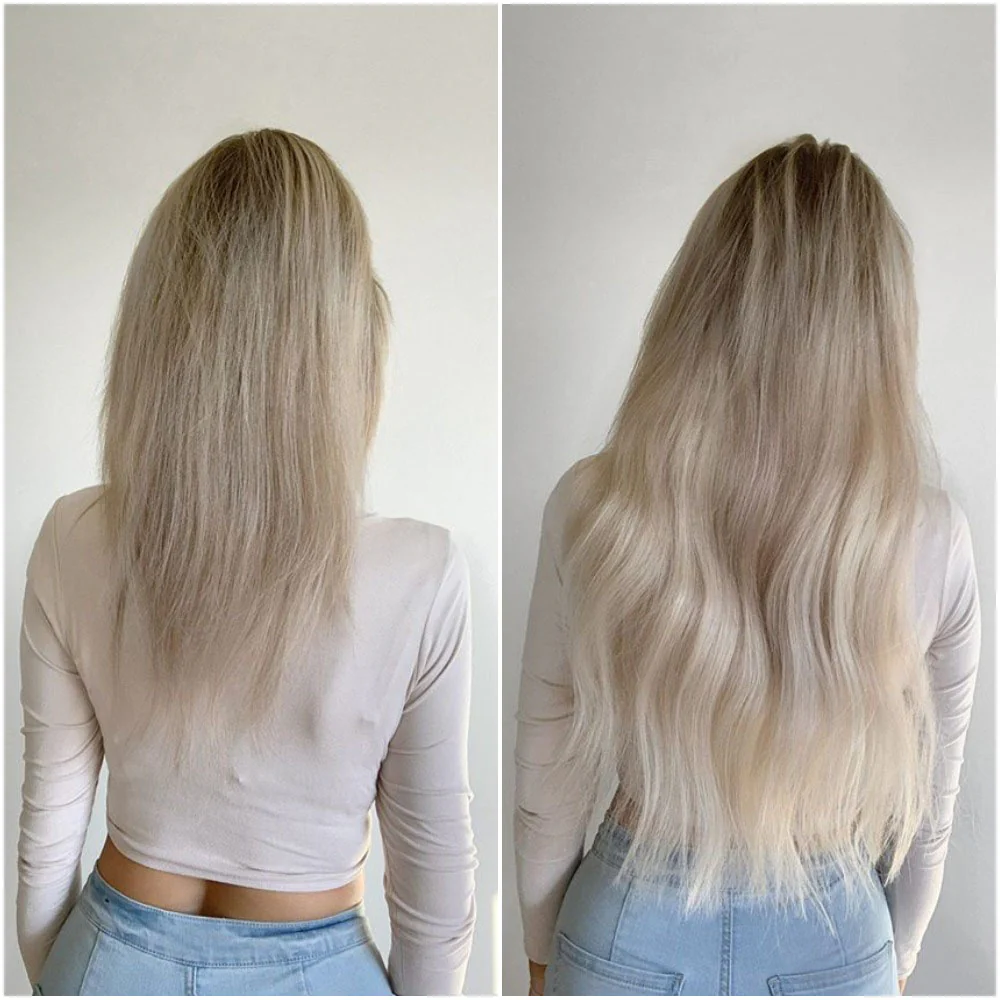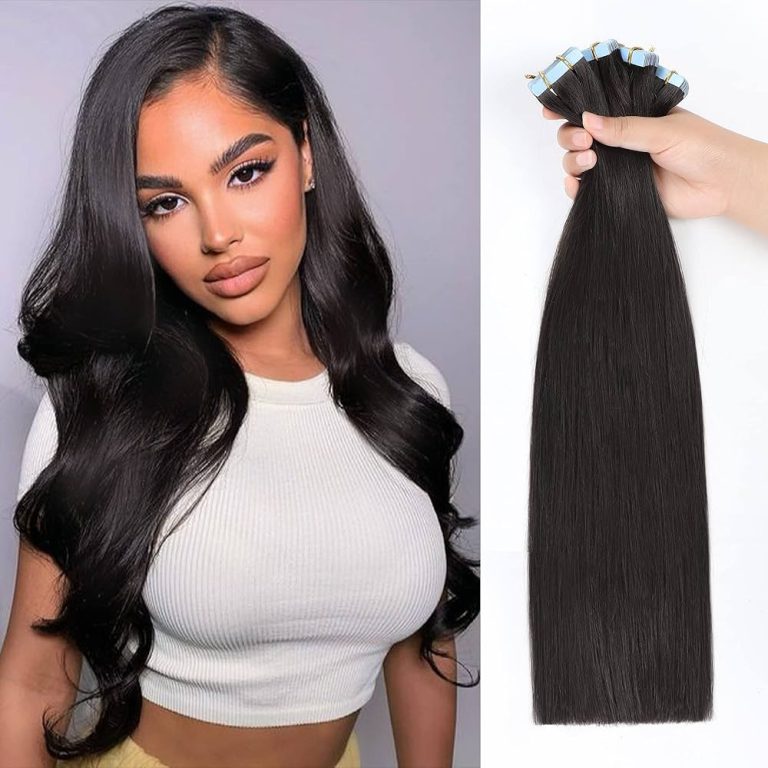
Best Hair Extensions for Fine Hair? Choose the Right Extensions
Introduction to Hair Extensions for Fine Hair
Choosing the best hair extensions for fine hair can be daunting. Fine hair poses unique challenges, but the right extensions can work wonders. They add volume, length, and confidence. The key is understanding what works for your delicate strands.
Hair extensions come in various types, each with its own set of pros and cons. Clip-in extensions, tape-ins, micro rings, wefts, and pre-bonded options offer different benefits. The best hair extensions for fine hair should be lightweight and easy to manage. They should blend seamlessly with your natural hair while avoiding damage.
This guide will walk you through diverse extension types, considerations for fine hair, application tips, and maintenance advice. Get ready to transform your hair with added fullness and length without compromising on health and style.
The Various Types of Hair Extensions
Understanding the various types of hair extensions is crucial for those with fine hair. Each type offers unique features suitable for different needs and preferences. Here, we explore five common extensions that could be the best hair extensions for fine hair.
Clip-In Extensions
Clip-in extensions are a popular choice due to their ease of use. They offer a temporary way to add volume and length. Small clips attached to the extensions snap into your natural hair. For fine hair, select lightweight clip-ins that won’t tug or pull.
Tape-In Extensions
Tape-in extensions involve adhesive strips that bond to your hair near the roots. They’re semi-permanent and can last several weeks with proper care. These extensions offer a flat and seamless look. Make sure to opt for a mild adhesive to minimize any potential damage to fine hair.
Micro Ring Extensions
Micro ring extensions use small beads to attach strands to your natural hair. No glue or heat means less risk for hair damage. It’s vital to have these applied by a professional to prevent stress on the scalp and ensure proper placement.
Weft Extensions
Weft extensions are strands of hair sewn onto a fabric strip. They can be applied through braiding, beads, or with adhesives. For those with fine hair, hand-tied wefts are lighter and more delicate, reducing the stress on natural hair.
Pre-Bonded/Fusion Extensions
Pre-bonded, also known as fusion extensions, are fused to natural hair using an adhesive, typically keratin. They provide a very natural look but require professional application and removal. Choose those specifically designed for fine hair to avoid too much weight and stress.
Each of these extension types has the potential to be the best hair extensions for fine hair when chosen and applied correctly. Factor in texture compatibility, weight, maintenance, and styling flexibility as you consider your options.

Factors to Consider When Choosing Extensions for Fine Hair
Choosing the best hair extensions for fine hair requires careful consideration. Not all extensions will suit your hair type. There are several factors to keep in mind to ensure you choose extensions that enhance your hair without causing damage.
Hair Texture Compatibility
Your natural hair texture plays a big role in how well extensions will blend in. For fine hair, seek extensions that match your hair’s texture. This ensures a more natural, seamless look and prevents the extensions from standing out against your finer strands.
Extension Weight and Scalp Stress
Fine hair is more delicate and can be weighed down by heavy extensions. Opt for lightweight options to prevent scalp stress and hair damage. Avoid any that feel heavy or pull on your hair, as this can lead to breakage.
Longevity and Maintenance
Consider how long the extensions will last and what upkeep they require. Some need frequent adjustment or replacement, which can be time-consuming and costly. Find a balance between longevity and ease of maintenance that suits your lifestyle and budget.
Color Match and Styling Flexibility
Ensure the extensions match your hair color for the most natural look. Also, consider if you can style them as you would your own hair. Being able to heat style and wash your extensions without damage adds to their versatility and appeal.
Application Tips for Fine Hair Extensions
To achieve the best results with hair extensions on fine hair, considering the right application techniques is crucial. Here are some tips to help you apply extensions while maintaining hair health:
Choose the Right Method for Your Lifestyle
Opt for an application method that fits your daily routine. If you frequently style your hair, clip-in extensions might be a better choice due to their versatility and ease of use.
Apply with Caution and Precision
Ensure that any method you choose is applied by a skilled professional. This is especially important for methods like micro rings or tape-ins, which require meticulous placement to avoid stress on fine hair.
Avoid Overloading Your Hair
Distribute the extensions evenly to avoid putting too much weight in one area. Using fewer wefts or strands can help reduce the risk of damage.
Use Gentle Products
After installation, use gentle, sulfate-free shampoos and conditioners that don’t weigh down hair or degrade the adhesive on tape-ins or keratin on fusion extensions.
Regular Adjustments are Key
Schedule regular appointments for maintenance. This ensures that your extensions remain secure and that your natural hair does not suffer from tangles or matting.
By following these application tips, you can lengthen and volumize your fine hair effectively, making it look its best while keeping it healthy.

Pros and Cons of Different Extension Methods
Navigating through the world of hair extensions for fine hair requires a balanced look at the benefits and drawbacks of each method. Let’s delve into the durability, comfort, installation time, cost, and the potential for damage associated with the various hair extension methods.
Durability and Comfort
Every extension method offers a different level of durability and comfort. Clip-ins are generally more comfortable and less durable, ideal for short-term wear. Tape-ins and micro rings offer a balance, providing a more prolonged wear while still maintaining comfort. Fusion extensions are highly durable but may compromise comfort over time.
Cost and Installation Time
The cost and time involved in installation varies greatly. Clip-ins are the least expensive and quickest to apply. Tape-ins and micro rings require a moderate investment and installation time. Wefts and fusion extensions, on the other hand, can be costly and time-consuming, necessitating professional assistance.
Damage Risk and Hair Health
The risk of damage to fine hair is an essential factor to consider. Clip-in extensions carry the lowest risk, as they can be removed daily. Tape-ins and micro rings require cautious application to minimize damage. Fusion extensions pose a higher risk due to the use of adhesive and application heat, which is why they must be applied by an expert to ensure hair health is preserved.
Maintenance and Care of Extensions for Fine Hair
Maintaining extensions on fine hair demands gentle care and specific strategies to ensure longevity and health. Here is how to keep your extensions in prime condition:
Use the Right Hair Care Products
Select shampoos and conditioners made for extensions. Pick mild, sulfate-free options. These keep extensions clean and natural hair healthy without extra weight or residue.
Gentle Brushing Is Key
Brush your hair regularly with a soft-bristle brush. Start from ends and work up to roots. This prevents tangles and avoids pulling on the extensions.
Avoid Heat Damage
Limit the use of hot styling tools. When necessary, use a heat protectant spray. Heat can weaken bonds and dry out both extensions and natural hair.
Keep Extensions Dry
Blow-dry your hair on a low heat setting. Don’t go to bed with wet hair. Damp extensions can mat, tangle, or slip. Dry hair carefully to avoid these issues.
Regular Maintenance Appointments
Visit your stylist regularly. They can check on the extensions and perform any needed adjustments. This helps maintain a natural look and prevents damage.
Nighttime Care
Braid hair loosely or wear a soft cap to bed. This minimizes stress and friction on the extensions.
Use Caution with Styling Products
Avoid heavy oils and styling products. These can loosen extensions and make fine hair limp.
By adhering to these care practices, you can extend the life of your hair extensions and keep your fine hair looking its best.

Conclusion: Making the Best Choice for Your Fine Hair
Choosing the best hair extensions for fine hair takes thought and care. Remember to prioritize extensions that are lightweight and match your hair’s texture for a natural look. Go for methods that minimize scalp stress and avoid those that could lead to damage.
Pick a color that blends well with your natural hair. Make sure the extensions offer styling flexibility. This way, you can treat them just like your own hair.
Think about how long you plan to wear your extensions. Decide on a method that fits your daily life and budget. Regular maintenance is key to keeping your fine hair healthy.
In the end, the best hair extensions for fine hair are those applied with precision. They should be managed with gentle care, and ideally, they add confidence to your look without harming your natural locks. Make your choice wisely and enjoy the new volume and length!
